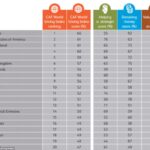Not everyone who works for your company will remain there. Some employees will stay for years. Others may fizzle out within a few weeks. The last two words a company wants to hear, however, are “high turnover”. As an employer, it’s important that you understand all the reasons why employees are leaving your company and at what rate. By discovering all of the factors involved in employees quitting their jobs, you can have a more comprehensive understanding of why they’re leaving and what it’s costing your business.
You can begin by getting a report on the hard numbers. What are the percentages of those coming in versus those who are going out? What are the reasons why these numbers exist? And most importantly, how much is it costing your company every time you lose an employee? Businesses that range from small stores to large corporations spend a considerable amount of money training new employees. Once they’re trained, they are then given resources (uniforms, equipment, etc.) to perform their job. The hard numbers will give an employer a solid basis to work from in determining where the company can improve in employee retention and where the expenses occur.
What is an Attrition Rate?
An attrition rate is a method for calculating the percentage of employees who have left your company over a given period. Attrition rates essentially fall into two categories. The first is resignation; the second is termination. Companies can also get a total attrition rate of all employees leaving a company. Attrition rates are valuable in helping executives determine how to improve certain dynamics within their company. This would include hiring and firing methods, training, work environments, pay & raises, employee recognition, and job descriptions.
There are variables that can alter the attrition rate at any given time. For instance, some companies may have to layoff hundreds of employees in order to keep its door open. This is something that may affect an attrition rate in an isolated period, but not over the long term. Another example would be temporary employment such as hiring 50 new employees during the Christmas season to keep production flowing smoothly. In most cases, companies are not concerned with short-term and temporary reasons for employee attrition. Businesses that experience moderate to high turnover rates, want to know exactly how many employees are leaving their company and at what rate over the long term.
Advantages of Knowing Your Attrition Rate
The greatest advantage of knowing an attrition rate is that it forms the basis for creating a strategy to increase employee retention and success. For instance, if an executive observes that a branch of a company is experiencing a high rate of employee termination, the first question they will ask would be, “How many employees are getting fired within a month and why?” Knowing the exact numbers would help an employer recognize whether the attrition rate is normal or severe.
Click here to use our free attrition calculator!
Another benefit of understanding attrition rates is helping administrations figure out where restructuring can be done in the company. Let’s say that there’s a certain position that keeps losing worker after worker. When the company does some investigation they find that former employees complained that the job was too difficult to perform and that it required the work of two employees instead of one. The employers can then adjust the position and create two jobs so that production is improved and workers feel a sense of accomplishment. Creating new jobs and increasing production began when the company executives had understood the attrition rate and what lead to it.
Conclusion
Attrition rates are easy to calculate and even easier to decipher. Although many executives can spend the time doing it on their own, most use a calculating system that is already set in place to save time and ensure accuracy. Encast offers an attrition calculator that helps you determine how much money your company is losing in employee turnover and recruitment costs each year. Encast calculators are user-friendly and super accurate. Simply plug in the numbers and find out where your company stands.
{{cta(‘5e2dbb23-2282-46ad-8d7e-8c42bb83be17’)}}




































































































































